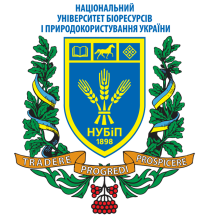Resource information
Article determine the essence of the definition of "region", defined types of regions. In general, we can distinguish four types of regions, formed to implement the tasks under different direction: a) homogeneous regions (formed on the basis of common characteristics – mountain region, economically developed / underdeveloped region and so on.). b) functional regions (formed by determining the basic type of economic activity – touristic region, agricultural region, etc.). c) administrative regions (formed by pre-defined criteria for performing administrative functions in a particular area – district, local council, etc.). d) personal perception regions (based on personal values – Homeland and so on.). The focus of this publication focuses on the study of rural regions.
As a result of studies is found that the population of Ukraine decreased by about 7 million Inhabitants. In 1993 there was 52.2 million of people, and in 2016 dropped to 42.7 million (temporary occupied territories excluded). Determined that the most influential factors are the degradation of rural region’s economic and demographic crisis (can be both a cause and consequence of each other). In this regard, the worsening of demographic situation is the biggest problem, because without human resources economic growth can’t be achieved.
For more profound understanding of the problem we used the spiral of negative developed of communities/regions proposed by Austrian scientists G. Weber and T. Fisher. It indicates the relationship between adverse events and their sequence. This choice is not accidental, because the spiral indicates that this is a progressive movement that eventually accelerated and the difficulty of stopping the negative processes increases not arithmetically but geometrically.
Therefore, developing regional programs of rural development moderators (selected and trained specialists who work in the region) cooperate with the heads of communities and local residents. Thus, they try to form a regional identity, create the region’s brand, develop a regional strategy, promote regional products both within the region and outside, try to make the region attractive for tourist.
It is determined that monopolized agricultural production is a significant constraint for the development of rural areas in Ukraine. It is difficult to rely on the development of the community in which most of agricultural lands are used by huge agricultural holdings, which displace locals from the region. Moreover, the government policy in the agricultural sector contributes fully to them and that is disastrous for the state in the long term. For comparison, the average area of agricultural enterprise in Austria is approximately 43 hectares and added value in the region is much higher than in Ukraine.
For more effective rural development it is proposed to develop a long-term national development strategy for depressive territories, because preservation of the existing state monopolization strategy will provoke even greater demographic crisis.
It is as well necessary to eliminate the corruption risks that are present in all programs financed by public funds. In this regard, it is important that those who make decisions about the allocation of funds were not linked with the beneficiary regions and specific applicants.



